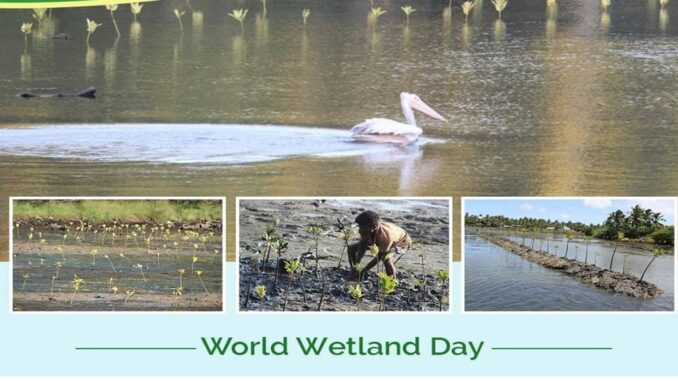
Pradip Shah, the co-founder of Grow-Trees.com, highlights how trees help to nourish eco-sensitive zones
World Wetlands Day, observed annually on February 2, globally highlights the essential role wetlands play for both people and the planet. The day also commemorates the adoption of the Convention on Wetlands on February 2, 1971, in the Iranian city of Ramsar. In India, nearly 5% of the land, encompassing over 15.26 million hectares, constitutes wetlands, including those declared as Ramsar sites, protected under stringent convention guidelines. During the 75th Independence Day celebrations in 2022, India incorporated 11 additional wetlands into the Ramsar sites list, taking the total to 75 Ramsar sites, covering an area of 13,26,677 hectares in the country.
On World Wetlands Day, environmental expert and co-founder of the social enterprise Grow-Trees.com, Pradip Shah, highlights the significance of strategic tree plantation efforts to safeguard these distinct ecosystems.
Augmented ecological balance
The presence of aquatic vegetation sets wetlands apart from other conservative areas. The trees within this system play a pivotal role in maintaining ecological balance through multifaceted interactions with the environment. They contribute significantly to preserving water quality by effectively filtering out nutrients and sediments. However, to ensure the success of tree planting initiatives in these sensitive ecosystems, meticulous ecological assessment, selection of native tree species, and understanding of wetland types are crucial. When executed strategically, nourishing wetlands through tree plantation helps foster a more resilient and balanced ecosystem over time.
Prevention of soil erosion
Wetlands permanently saturated with water and dominated by trees are known as swamps. In India, some of the most common wetland trees found in these swamps include Mangroves and related varieties like Sundari trees (Heritiera fomes). Trees like Mangroves, for example, offer natural infrastructure, protecting nearby populated areas by reducing erosion and absorbing storm surge impacts during extreme weather events. The dense roots of these trees also play a crucial role in binding and building soils.
Improved water quality
Wetlands serve as natural water purifiers. The trees and flora within them filter sediment and absorb various pollutants from surface waters. Studies have also demonstrated the efficiency of wetland systems in removing even organic compounds like pesticides and pharmaceutical residues, which pollute water bodies. In human-made wetland systems, this cleansing function improves the quality of groundwater supplies. Hence, strengthening wetlands with additional plantations can further enhance their sediment trapping and chemical detoxification capabilities.
Healthier habitats
The wetlands in our country are home to vast faunal diversity, from the Marsh Mongoose in Salt Lake swamps to various species of reptiles, birds, and fishes. The wetland environment is teeming with life, and enhancing it with more plants and trees will protect this biodiversity and provide a habitat for fauna. Healthy vegetation is also crucial for maintaining these habitats’ strength, attracting many migratory birds every year.
Community engagement
Ensuring local participation is essential to establish ecologically balanced utilisation of available land and water resources. Engaging wetland users in planting trees and fostering nurturing practices can promote social responsibility and awareness about wetland preservation. Each wetland, whether marshy, swampy, estuarine, or human-made, harbours unique flora and fauna. Therefore, wetland users must understand these specificities. Conservation efforts like tree planting can bring humans closer to this ecosystem.
